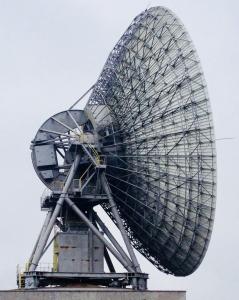Goonhilly-6 Antenna support to the Orion Exploration Mission 1 Flight
Programme
GSTP
Programme Reference
G613-022GS
Prime Contractor
QiNETIQ LTD.
Start Date
End Date
Status
Closed
Country
United Kingdom

Objectives
To study the feasibility of using the 32m Goonhilly-6 antenna (GNY-06) (GB) to support to the US Orion Exploration Mission 1 (EM-1) lunar flight currently scheduled for December 2017.
The study aims to confirm to the UK Space Agency (UKSA) the technical and economical viability of the upgrade of this antenna for on-ground support in the US EM-1 Mission. The preliminary outcome of the study will allow UKSA to consolidate their contribution to this project in preparation to the next Ministerial Council. ESA contribution to the following implementation phase will be limmited to technical supervision/support.
Description
It is anticipated that NASA would require 24hr communications coverage of the EM-1 flight for all phases of the mission. For the trans-lunar phase, this requires 3 ground stations positioned equally around the world.
To support the EM-1 flight, this proposal centres on Goonhilly-6 being the European ground station, in support of Goldstone and New Norcia or Canberra. The majority of the work involves complementing the existing Ku- and C-Band systems with a receive and transmission stage for communications with Orion (frequency band will be determined during the requirements capture of the project). This modification will be based on the existing TTCP RF Signal processing system.
As part of this programme the technical requirements will be identified together with any risks associated with the future proposed upgrade.The results of this activity will also emphasis any financial benefits that will result in the downstream business model and science return enabled through this project.
In particular, the proposed work plan is:
- Requirements capture:
- The Orion communications architecture needs to be understood to allow the system requirements of the ground station can be derived.
- Detailed design:
- Draw out the architecture design of the full end-to-end system.
- Design the system based on the architecture design.
- Capture procurement list.
- Identify breadboard activities to allow further de-risking.
- Feasibility report:
- Identify technical feasibility.
- Identify risks with the future proposed programme.
- Identify science return in implementing the proposed programme.
- Identify the cost for in implementing the proposed programme.
Application Domain
Exploration
Technology Domain
12 - Ground Station Systems and Networks
Competence Domain
8-Ground Systems and Mission Operations
Initial TRL
TRL N/A
Target TRL
TRL N/A
Public Document
Executive Summary
Final Presentation
